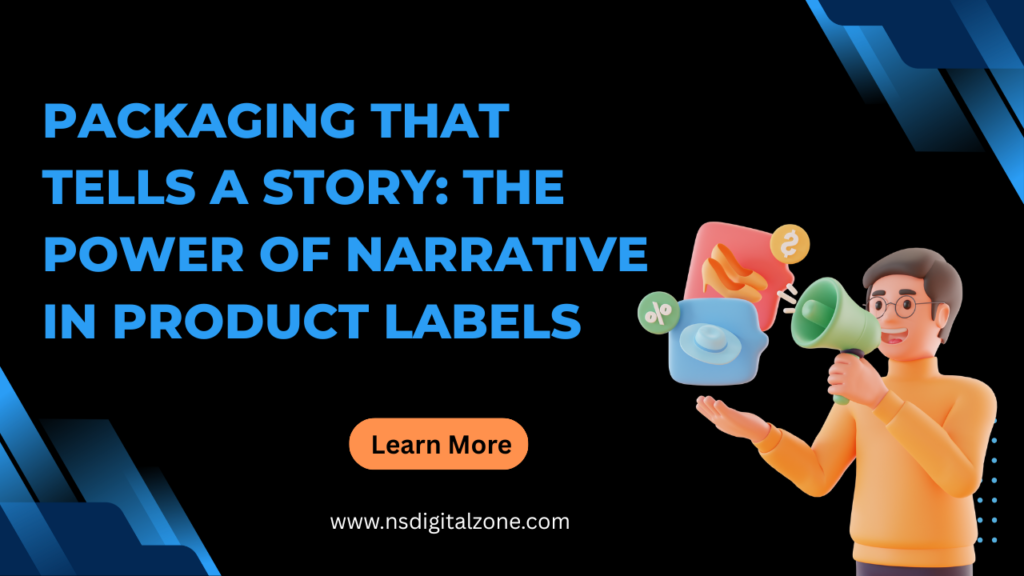In today’s competitive marketplace, where consumers are constantly bombarded with choices, packaging has evolved from merely serving as a protective layer to becoming an essential marketing tool. Among the many elements that influence a consumer’s purchasing decision, the story behind a product—communicated through its packaging—has proven to be one of the most effective. Packaging that tells a compelling narrative does more than just display information; it creates a powerful emotional connection between the consumer and the brand. It transforms an ordinary product into an experience, elevating its perceived value and fostering brand loyalty. In fact, storytelling on product labels is not just a creative endeavor—it’s a strategic approach that aligns with the modern consumer’s desires for authenticity, transparency, and emotional resonance. By using packaging as a storytelling tool, brands can communicate their values, heritage, mission, and product benefits in a way that engages consumers and influences their buying decisions.
1. The Emotional Impact of Storytelling in Packaging
Humans are hardwired to respond to stories. From ancient oral traditions to modern media, storytelling has always been a central part of how we understand the world around us. This deep-rooted connection to storytelling is why it is such a powerful tool in branding and packaging design. When a product’s packaging tells a story, it triggers an emotional response that goes beyond the functional and rational aspects of the purchase. A well-crafted narrative can evoke feelings of nostalgia, adventure, trust, or excitement, making the consumer feel like they are part of something larger than just the act of buying a product.
For example, a small-batch chocolate brand might share the story of how their beans are handpicked from local farms in a remote village. The label could include a personal note from the farmer who grows the cacao, along with images of the farm and the people involved in its production. Such a story taps into consumers’ emotions by highlighting the craftsmanship, care, and authenticity behind the product. This type of narrative not only increases the emotional value of the product but also makes the consumer feel good about their purchase—knowing that they are supporting a company with a meaningful mission. By weaving this emotional connection into their packaging, brands can forge a deeper relationship with their audience and increase brand loyalty.

2. Differentiating Your Brand Through Unique Narratives
In a marketplace crowded with similar products, differentiation is key. The power of storytelling on packaging lies in its ability to highlight what makes a brand unique, whether it’s the origin of the ingredients, the values that drive the business, or the story of how the product came to be. Instead of relying on generic marketing messages, storytelling allows brands to communicate their uniqueness in a way that resonates with consumers on a personal level.
For instance, a brand that specializes in eco-friendly skincare could use its product label to tell the story of its founder’s journey toward sustainability. The label might feature eco-conscious practices, such as sourcing organic ingredients, using minimal packaging, or employing cruelty-free production processes. By presenting the narrative behind these values, the brand is able to differentiate itself from competitors and appeal to consumers who are increasingly concerned with the ethics behind the products they purchase.
Moreover, the narrative element gives consumers something to connect with beyond the mere transaction. When a customer can relate to the story—whether it’s about the brand’s history, the people behind it, or the product’s origins—they’re more likely to develop an emotional attachment to the product, making them more likely to become repeat buyers and advocates for the brand.
3. Building Trust and Transparency
In today’s age of heightened consumer awareness, transparency is crucial. Consumers are increasingly seeking brands that are open about their practices and values. This is where storytelling on packaging plays a critical role in establishing trust. When a brand uses its packaging to share its story—whether it’s about how the product is made, the ethical sourcing of ingredients, or the company’s commitment to sustainability—it builds a sense of honesty and transparency that resonates with consumers.
Take, for example, a company that produces organic food products. Instead of simply stating “organic” on the label, the packaging might tell the story of how the food is grown, who the farmers are, and the sustainable practices they use. This level of detail not only informs the consumer but also provides them with a sense of assurance that they are making a responsible purchasing decision. When brands go the extra mile to explain their processes and back up their claims with authentic stories, they are more likely to earn the trust of consumers who value honesty and integrity.
In a world where consumers are bombarded with marketing noise, the need for transparency has never been greater. Brands that use packaging as a platform for storytelling help demystify their processes, providing consumers with the information they need to make informed decisions. This level of transparency also strengthens the relationship between the consumer and the brand, resulting in greater loyalty and advocacy.
4. Aligning with Consumer Values and Lifestyle
One of the most effective ways storytelling on packaging connects with consumers is by aligning with their values and lifestyle. Today’s consumers are increasingly making purchase decisions based on their personal values, whether it’s environmental sustainability, ethical labor practices, or a commitment to health and wellness. By incorporating these values into their product narrative, brands can appeal to the growing demographic of conscious consumers who want their purchases to reflect their beliefs.
For instance, a company selling eco-friendly household products could use packaging to tell the story of how their products are helping to reduce plastic waste. By showcasing their commitment to sustainability and highlighting how the consumer can make a difference by choosing their product, the brand is able to tap into the consumer’s desire to live more sustainably. The product label becomes more than just a piece of packaging—it becomes a vehicle for sharing the brand’s values and inviting consumers to be a part of a movement that matters to them.
Brands that align their packaging storytelling with their consumers’ values are more likely to foster a sense of community and belonging. When a consumer feels that a product aligns with their lifestyle and principles, they are more likely to form a lasting connection with the brand and become repeat customers. Moreover, these customers are more likely to become brand advocates, sharing their positive experiences with friends and family, further driving brand awareness and loyalty.
5. The Visual Storytelling Power of Packaging Design
While the written story on a product label is important, the visual elements of packaging design play a key role in storytelling as well. From color choices and typography to imagery and illustrations, every aspect of the design contributes to the overall narrative being conveyed. The visual elements of packaging are often the first thing a consumer notices, and they can instantly communicate key messages about the brand or product.
For instance, a product that features earthy, natural tones and hand-drawn illustrations might convey a sense of authenticity and craftsmanship. On the other hand, sleek, modern designs with bold typography and metallic finishes may suggest luxury, sophistication, and innovation. These visual cues help tell a story before the consumer even reads a single word. When a brand combines compelling visual design with a well-crafted narrative, the result is a cohesive and immersive storytelling experience that resonates with the consumer on multiple levels.
The combination of visuals and written narrative on packaging is what gives a brand its unique voice. Whether it’s through whimsical illustrations, vintage-inspired typography, or minimalist design, the packaging becomes a visual extension of the brand’s personality. By telling a story visually, brands can convey complex messages about their values, history, or product benefits in a way that is both engaging and memorable.
6. Creating a Memorable Consumer Experience
Ultimately, packaging that tells a story transforms the simple act of buying a product into a memorable experience. It goes beyond functionality and aesthetics to create a sense of excitement, anticipation, and connection. When a consumer picks up a product that has a meaningful story behind it, they are not just purchasing an item—they are becoming part of a larger narrative. This experience is something that can stick with them long after the purchase is made, influencing their perception of the brand and encouraging repeat business.
A memorable packaging story might also encourage consumers to share their experiences on social media or recommend the product to others. In a world driven by word-of-mouth marketing, a compelling story on a product label can generate buzz, raise awareness, and drive new customers. Packaging that tells a story is an investment in creating a lasting impression and cultivating a deeper relationship with consumers.
Conclusion
In the modern marketplace, packaging has transcended its functional role and become a key element of brand storytelling. When a product label tells a story, it creates an emotional connection with consumers, differentiates the brand, and builds trust and transparency. Packaging that aligns with consumer values and lifestyle can foster loyalty, while thoughtful design can visually communicate a brand’s unique narrative. Ultimately, packaging that tells a story is about creating a memorable experience for the consumer—one that goes beyond the transaction and builds a lasting relationship. In a world where consumers are increasingly looking for brands they can connect with, the power of narrative in product labels is not just an opportunity—it’s a necessity for brands seeking to stand out, build trust, and cultivate loyalty.











